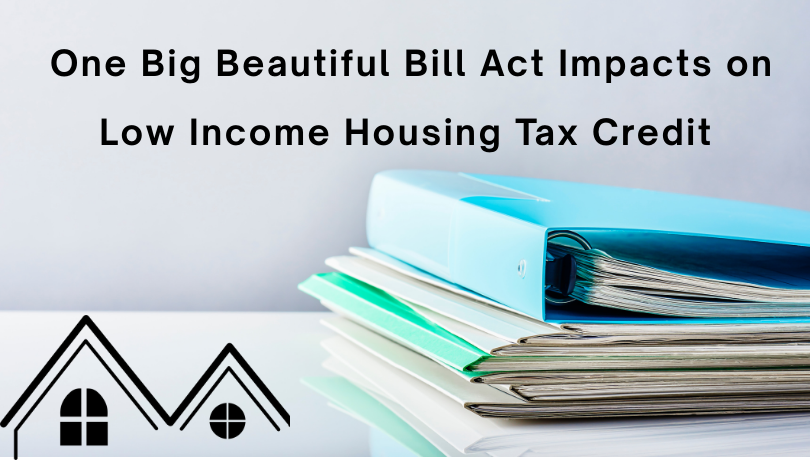On July 4, 2025, President Donald Trump signed the One Big Beautiful Bill Act (OBBBA) into law, marking a significant overhaul of the U.S. tax code and introducing sweeping changes that affect various sectors, including affordable housing. Among its many provisions, the OBBBA includes key reforms to the Low-Income Housing Tax Credit (LIHTC), a critical federal program designed to incentivize the development and preservation of affordable rental housing for low- and moderate-income households. This article explores the specific changes to the LIHTC under the OBBBA, their potential impacts on affordable housing production, and the broader implications for stakeholders in the housing industry.
Overview of the Low-Income Housing Tax Credit
The LIHTC program, established under the Tax Reform Act of 1986, is one of the nation’s primary mechanisms for financing affordable rental housing. Administered by the Internal Revenue Service (IRS) and allocated through state housing agencies, the program provides tax credits to developers who build or rehabilitate housing for low-income tenants.
The LIHTC program operates through two main credit types:
-
9% Credits: These are awarded competitively to new construction or substantial rehabilitation projects that receive no additional federal subsidies. They cover a higher portion of project costs but are limited in availability.
-
4% Credits: These are non-competitive and tied to projects financed with tax-exempt private activity bonds, covering a smaller portion of costs but available in larger quantities.
The program has financed millions of affordable rental units since its inception and is helping to address a critical need for housing in this country.
Key LIHTC Provisions in the One Big Beautiful Bill Act
The OBBBA introduces several significant changes to the LIHTC program, aimed at expanding its reach and increasing the supply of affordable housing. These changes are projected to significantly boost affordable housing production over the next decade.
The key changes include:
1. Permanent Increase in 9% LIHTC Allocations
The OBBBA permanently increases the allocation of 9% LIHTC credits by 12% starting in 2026. This expansion addresses the chronic oversubscription of 9% credits, where demand from developers far exceeds available funding. This increase is anticipated to help finance between 75,000 and 90,000 additional affordable rental units between 2026 and 2035.
2. Reduction in Private Activity Bond Financing Threshold
The OBBBA lowers the threshold for private activity bond financing required to qualify for 4% LIHTC credits from 50% of a project’s land and building costs to 25%, effective for properties placed in service after December 31, 2025, with bonds issued after that date. Since many states have bond allocations that are over-subscribed, this will allow for more projects that use less bond capacity, to increase the number of housing units financed with 4% LIHTC credits. This threshold reduction, combined with other LIHTC provisions, could result in the production or preservation of over 1 million additional affordable rental homes between 2026 and 2035.
Opportunities for Stakeholders
The LIHTC reforms present several opportunities for stakeholders in the housing and mortgage industries:
-
Developers: The increased availability of 9% credits and the lower bond financing threshold for 4% credits provide developers with more opportunities to finance affordable housing projects.
-
Investors: The OBBBA’s tax benefits, including 100% bonus depreciation and the QBI deduction in addition to the expanded LIHTC provisions, make LIHTC investments more attractive by improving overall returns on real estate projects.
-
Communities: The LIHTC expansions, bonus depreciation and additional programs, such as New Markets Tax Credits and Opportunity Zones, are expected to drive investment in low-income communities. These changes could lead to more equitable community development and increased housing stability for low-income renters.
Conclusion
The One Big Beautiful Bill Act represents a landmark expansion of the Low-Income Housing Tax Credit program, with provisions that promise to significantly increase the supply of affordable rental housing in the United States. The permanent 12% increase in 9% credits and the reduced bond financing threshold for 4% credits are projected to finance over 1 million additional affordable units over the next decade, marking the largest LIHTC expansion in over 25 years. These reforms, combined with the permanent extension of the New Markets Tax Credit and Opportunity Zones, provide developers and investors with long-term stability and new opportunities to address the nation’s housing shortage.
However, the LIHTC program expansion alone cannot fully resolve the affordable housing crisis, and the OBBBA’s broader cuts to safety net programs and energy incentives may create challenges for low-income households and developers. Stakeholders in the housing industry—developers, investors, mortgage professionals, and community advocates—must carefully navigate these challenges to help expand opportunities for low-income individuals and communities.

